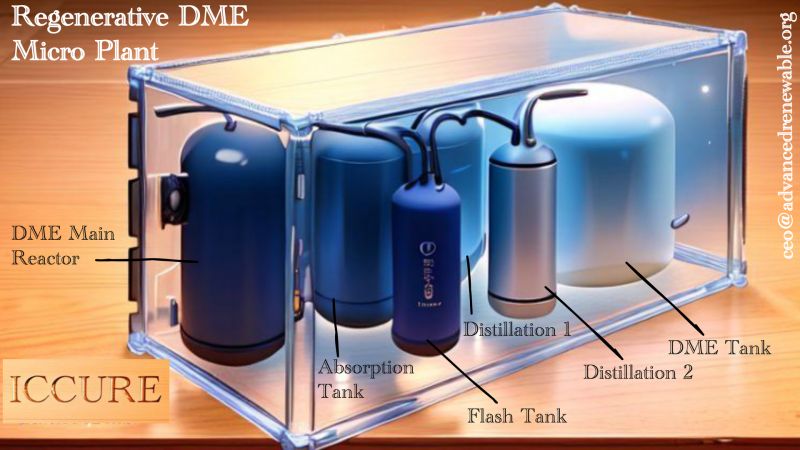Distributed Energy Resources, Regenerative DME Micro Plant
Advanced Renewable
Tue , 05 Mar 2024 21:01 WIB

In the energy transition era, especially in empowering biomass, the industrial approach must be different from the fossil era. Its dispersed character, with low energy density and specific gravity - makes transportation of raw materials uneconomical if the process is centralized.
By making the process from raw materials to the final product spread, there will be many benefits. These include reducing the carbon footprint in terms of transportation, in addition to the basic biomass energy which is already carbon-neutral, growing the local economy, and also being effective in addressing local energy needs.
In an island country like ours, fuels such as diesel, which is needed for power generation and ship transportation, and LPG, which our society has become dependent on in the last two decades, depend heavily on huge subsidies. Apart from transportation costs, the irony is that this subsidy is for something that we mostly import - namely oil and gas - diesel and LPG raw materials.
The good news is that both diesel and LPG can actually be completely replaced by local fuel which can be produced anywhere in the country, even the most remote islands and areas can produce this multi-purpose fuel. The raw material is biomass which is always available, even better if it is used in urban or industrial areas - because it can use CO2 emission raw materials of up to around 80%, the 20% remain biomass carbon or charcoal.
The product is a fuel called Dimethyl Ether (DME), which can directly replace LPG without any changes - including the cylinders and distribution or refilling system, and can also replace diesel up to 97% - the remaining 3% is for the lubrication material.
The DME production process is also relatively simple, the picture below is a compact design that fits in a 20 ft container, so that it can be sent anywhere easily, it can be used to address energy needs anywhere, including projects in remote areas.
Because the raw materials are biomass and CO2 - which is in excess everywhere, anything we burn will definitely produce CO2, this unit which we call the Regenerative DME Micro Plant (RDMP) can also be used to overcome energy needs in disaster areas, both natural disasters and man-made disaster like war etc.
RDMP in this container has a production capacity of around 1.5 tons DME per hour, if it uses biomass fuel completely - it needs 3 tons of biomass per hour, or if it is in charcoal form it needs around 1 ton of charcoal per hour. Or it can be replaced with 0.6 tons of charcoal plus 2.4 tons of CO2 per hour.
If you use a combination of charcoal and CO2 as raw materials, DME will become Regenerative DME, namely DME that is grown again from waste and emissions. While solving energy problems, we also clean CO2 emissions from the earth's atmosphere. This unit can be produced in any part of the world that needs it now, we are therefor looking for our global parter now.
Other Post
The New Energy Trilogy
Mar 05, 2024
Bali NetZero School
Mar 05, 2024
Jika Carbon Bisa Bicara
Mar 05, 2024
Carbon Sink Energy
Mar 05, 2024
Categories
Renewable Energy






Please register first!
For post a new comment. You need to login first. Login
Comments
No comments